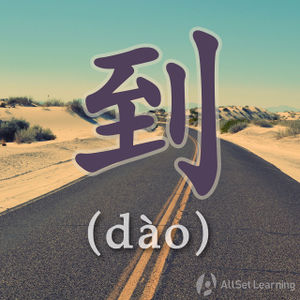Difference between revisions of "Result complements "-dao" and "-jian""
| Line 33: | Line 33: | ||
* 你 看 <em>见</em> 那 个 帅哥 了 吗?<span class="trans">Did you see that handsome boy?</span> | * 你 看 <em>见</em> 那 个 帅哥 了 吗?<span class="trans">Did you see that handsome boy?</span> | ||
* 你 看 <em>到</em> 那 个 帅哥 了 吗?<span class="trans">Did you see that handsome boy?</span> | * 你 看 <em>到</em> 那 个 帅哥 了 吗?<span class="trans">Did you see that handsome boy?</span> | ||
| − | * 我 没 <em>找 到</em> 我 的 手机。<span class="trans">I didn't find my | + | * 我 没 <em>找 到</em> 我 的 手机。<span class="trans">I didn't find my cell phone.</span> |
| − | + | * 我 走 进 家 门 的 时候,<em>闻 到</em>了 美味的 鸡汤! <span class="trans">I could smell the delicious chicken soup when I walked into home.</span> | |
| − | |||
| − | |||
| − | * 我 走 进 家 门 的 时候,<em>闻 到</em>了 美味的 鸡汤!<span class="trans"> I could smell the delicious chicken soup when I walked into home.</span> | ||
| − | |||
| − | |||
</div> | </div> | ||
Revision as of 08:12, 2 February 2014
-
Level
-
Similar to
-
Used for
-
Keywords
Two of the most common result complements in Chinese are 到 (dào) and 见 (jiàn). On this page we're only going to be talking about verbs related to the senses ("see," hear," etc.), and for this usage, the two are interchangeable.
Structure
Result complements are a huge topic in Chinese grammar, but you can approach them in stages. The structure you come across the most is a verb with 到 (dào):
Subject + Verb + 到 + Object
What 到 does is indicate that the outcome of the verb is achieved - what its result is. Without a result complement, the sentence would describe only the action itself. To illustrate, 看 "to look" is the action of turning one's head in a particular direction and focusing one's eyes, whereas 看到," to see," is the result of your brain taking in the visual input.
The complement 见 is very similar to 到, and it is used in the same way:
Subject + Verb + 见 + Object
However, there is a difference. 见 is generally only used after verbs involving sense, like 听 and 看, whereas 到 can be attached to a large variety of verbs (which we will discuss at a higher level on another page).
Examples
- 你 听 见 了 吗?Did you hear it?
- 你 听 到 了 吗?Did you hear it?
- 你 看 见 那 个 帅哥 了 吗?Did you see that handsome boy?
- 你 看 到 那 个 帅哥 了 吗?Did you see that handsome boy?
- 我 没 找 到 我 的 手机。I didn't find my cell phone.
- 我 走 进 家 门 的 时候,闻 到了 美味的 鸡汤! I could smell the delicious chicken soup when I walked into home.
As in the last sentence, this structure can be negated using 没.
See also
Sources and further reading
Books
- Short-term Spoken Chinese: Threshold Vol. 2 (汉语口语入门篇下) (pp. 92) →buy
- Basic Patterns of Chinese Grammar (pp. 109) →buy
- 40 Lessons for Basic Chinese Course (基础汉语40课上册) (pp. 205-6)→buy



